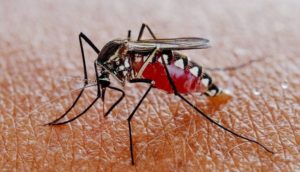Malaria Landscape in 2022: India Tops South & Southeast Asia in Recorded Cases
India led South and Southeast Asia in recorded malaria cases in 2022, comprising 66% of the 5.2 million cases reported in the region, according to the World Health Organization (WHO). The World Malaria Report 2023, released on November 30, 2023, noted that India saw a 55% reduction in cases, even though it accounted for the highest number of cases.
Climate Change and Malaria Transmission
The report emphasized the direct and indirect impacts of climate change on malaria transmission. Climate change interacts with the sensitivity of the malaria pathogen and the vector (female Anopheles mosquito) to temperature, rainfall, and humidity, potentially facilitating the spread of the disease.
Global Malaria Statistics
Globally, 249 million malaria cases were recorded in 2022, an increase of five million from the previous year. Pakistan experienced the largest rise in cases, with 2.1 million additional infections, followed by Ethiopia, Nigeria, Uganda, and Papua New Guinea.
India’s Contribution to Malaria Deaths
India, along with Indonesia, accounted for 94% of all malaria-related deaths in 2022. Despite this, the South East Asia region only contributed 2% to the global malaria burden and successfully contained the disease over the last two decades, reducing cases and deaths by 77%.
Success Stories and Challenges in Southeast Asia
Countries like Bhutan, Timor-Leste, and Sri Lanka reported zero malaria cases in 2022, showcasing successful efforts. However, Myanmar witnessed a sevenfold increase in cases from 2019-2022 due to political and social instability.
Africa Bears the Brunt
Africa remained the worst-hit continent, with 94% of all malaria cases (233 million) and 95% of global malaria deaths (580,000) in 2022. A significant portion of these deaths, about 78%, occurred among children under the age of five.
Climate Change as a Health Threat
The report underlines climate change as a major health threat, acting as a ‘threat multiplier’ by affecting health systems and creating financial strains. The ongoing UN Climate Change Conference emphasizes the need to address climate change’s direct and indirect impact on health.
Challenges in Malaria Eradication Goals
WHO’s malaria eradication goals face challenges as the world is 55% off track to achieve the 2025 target of reducing malaria cases and 53% off track for reducing malaria fatality rates. The funding gap for malaria control has also widened, growing from $2.3 billion in 2018 to $3.7 billion in 2022.
Month: Current Affairs - December, 2023
Category: Environment Current Affairs • Reports & Indexes Current Affairs








